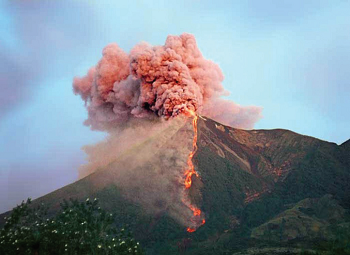Facts About Earthquakes
The surface of the earth is called the "crust" and is not one solid piece. It's more like a 20-piece puzzle. Each puzzle piece is called a "plate." The plates constantly move. Fortunately for us, they don't move fast.
An earthquake happens when a plate scrapes, bumps, or drags along another plate. When does this happen? About a half-million quakes rock the Earth every day. That's millions a year. People don't feel most of them because they are too small, too far below the surface, or too deep in the sea. Some, however, are so powerful that can be felt thousands of miles away.
A powerful earthquake can cause landslides, tsunamis, flooding, and other catastrophic events. Most damage and deaths happen in populated areas. That's because the shaking can cause windows to break, structures to collapse, fires to start burning, and other dangers.
Geologists cannot predict earthquakes. They hope they will in the future through continued research and improved technology.
Earthquakes can happen anytime or anywhere. But you can prepare for the unpredictable with a family safety plan, emergency kit, and supplies.
Facts:
• The largest recorded earthquake happened in Chile on May 22nd, 1960. It was a magnitude 9.5 earthquake.
• The deadliest known earthquake happened in China in 1556. It killed about 830,000 people.
• Most earthquakes happen 80 km or less below the Earth's surface.
• Most earthquakes and volcanos—80% of them—happen close to where two plates meet.
• Depending on the plate, they move between 1 and 15 cm a year.

